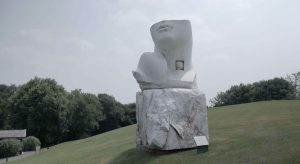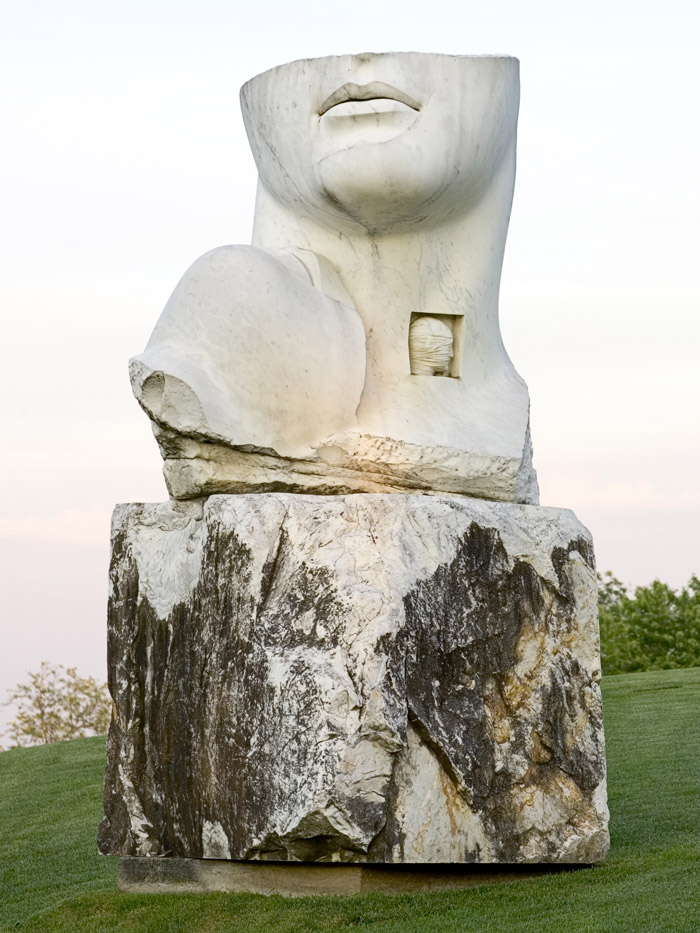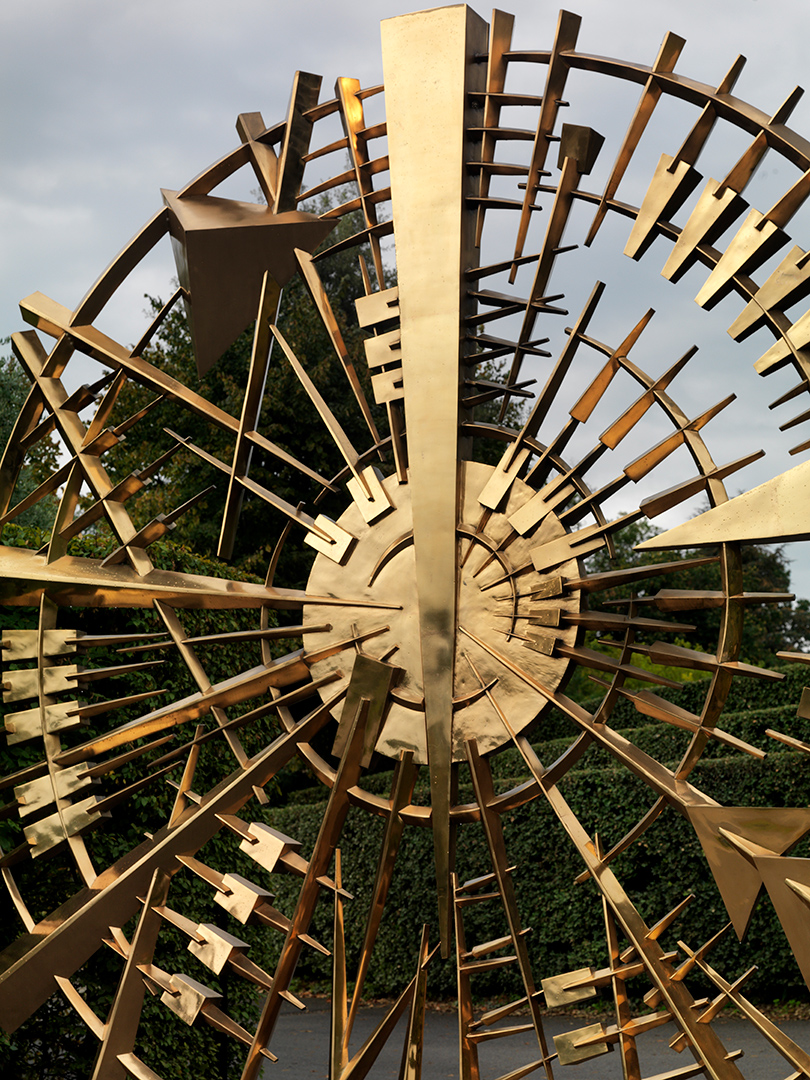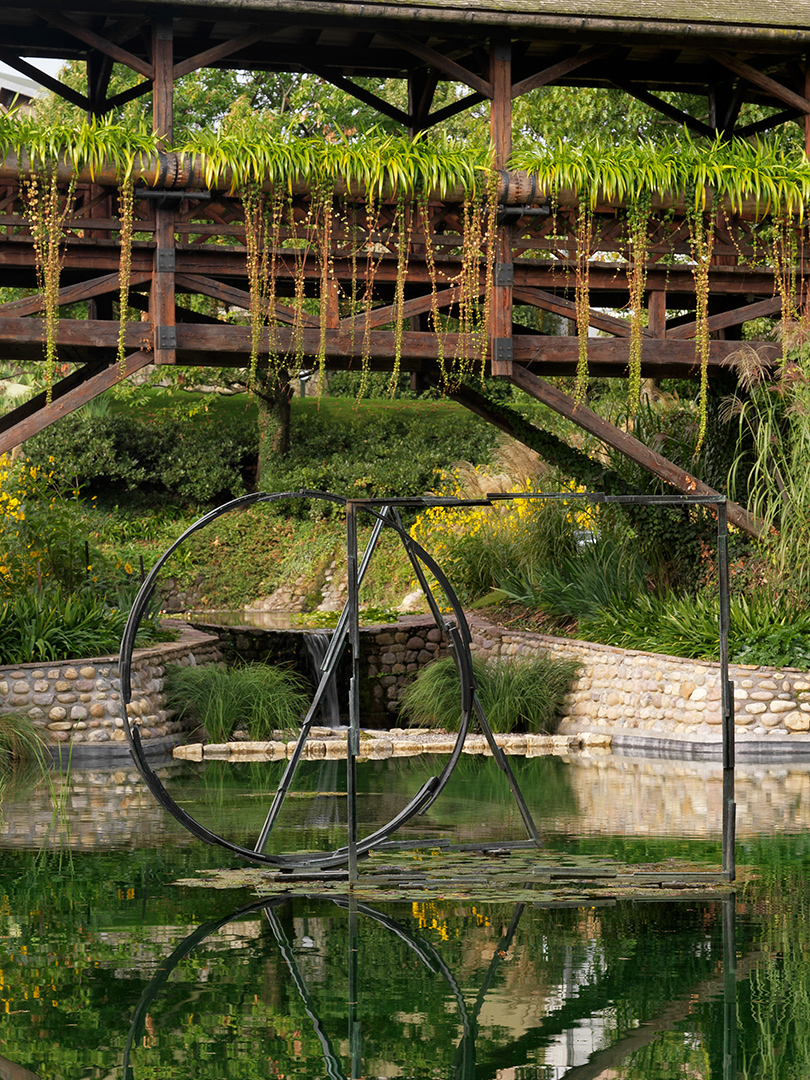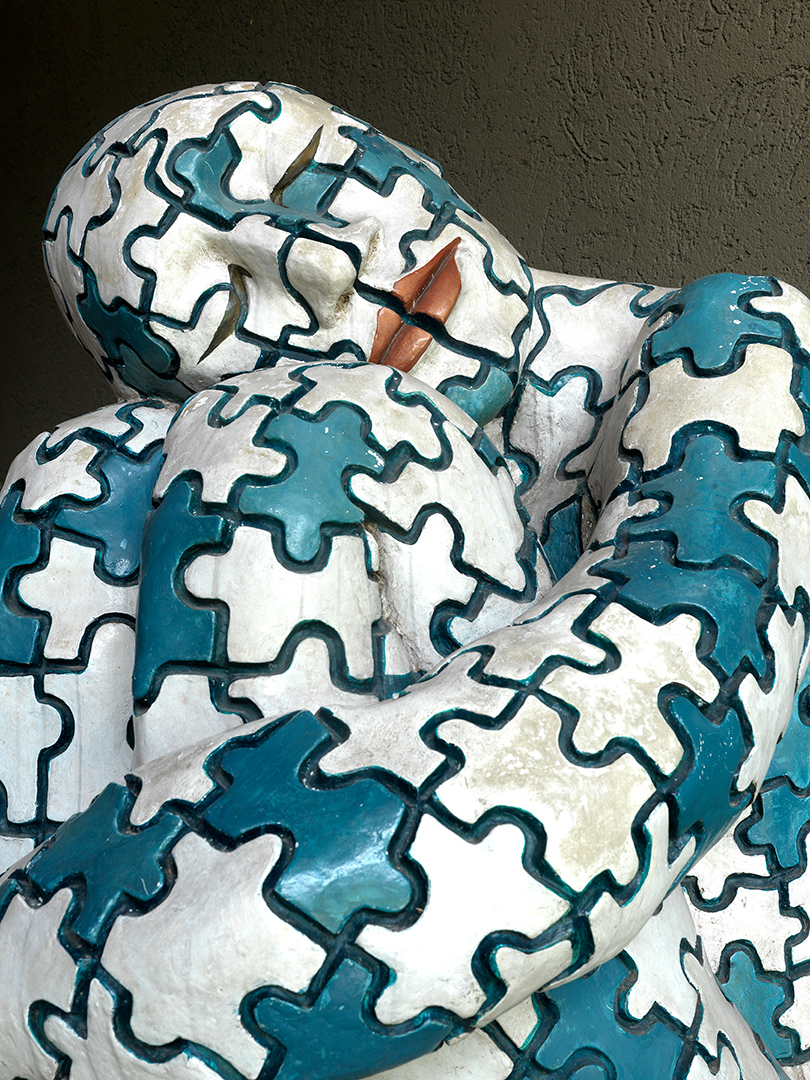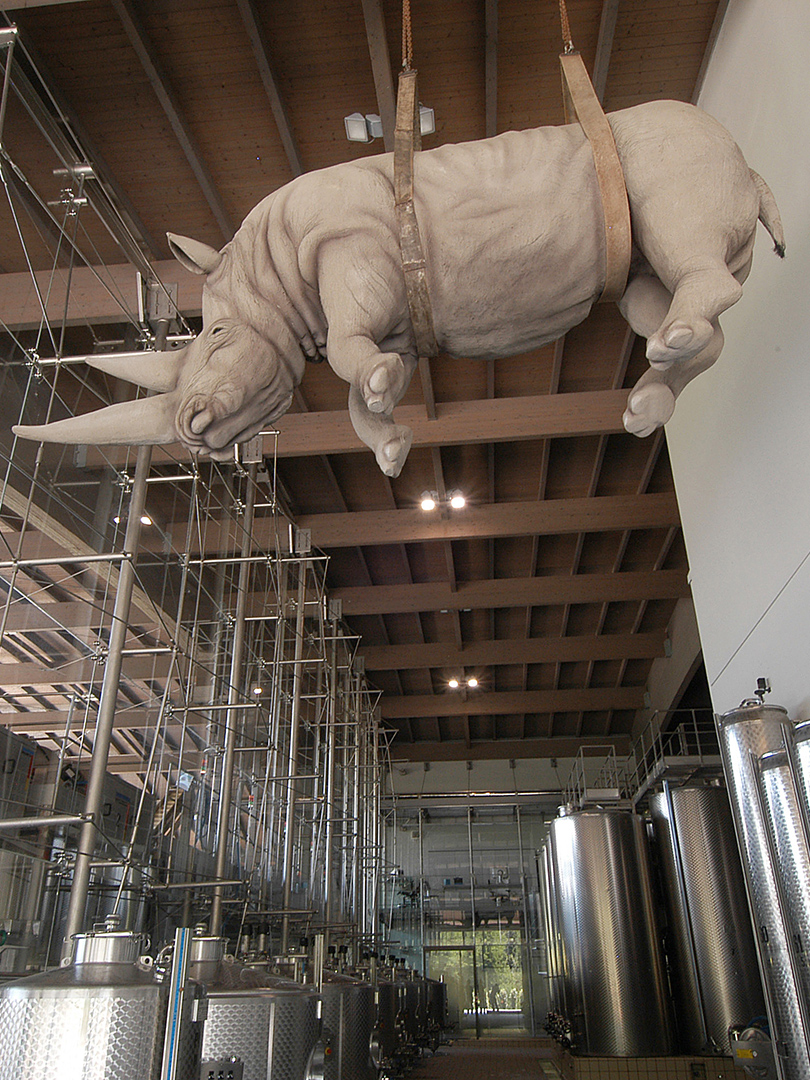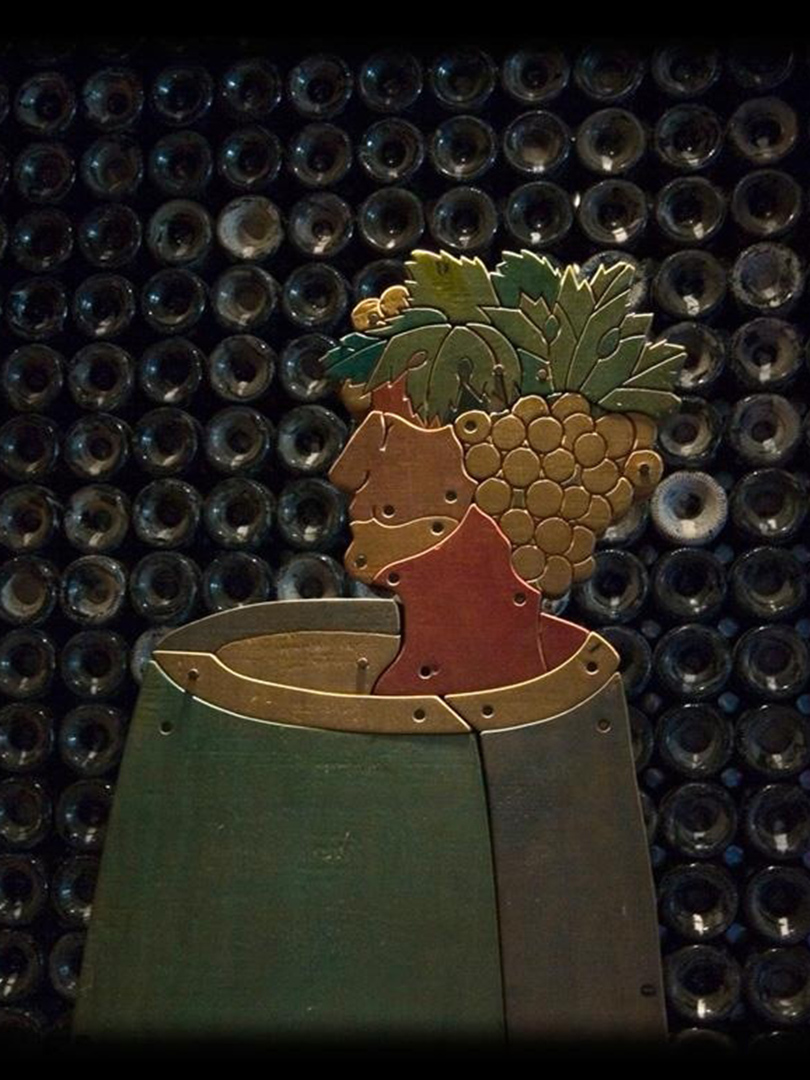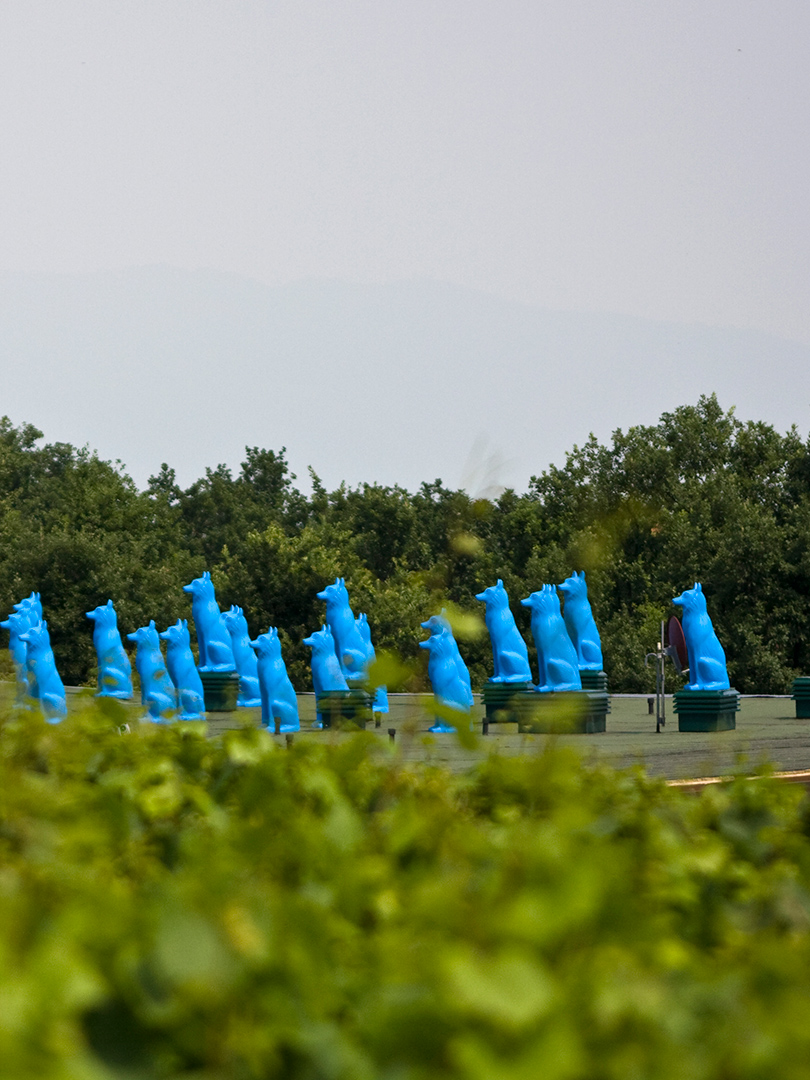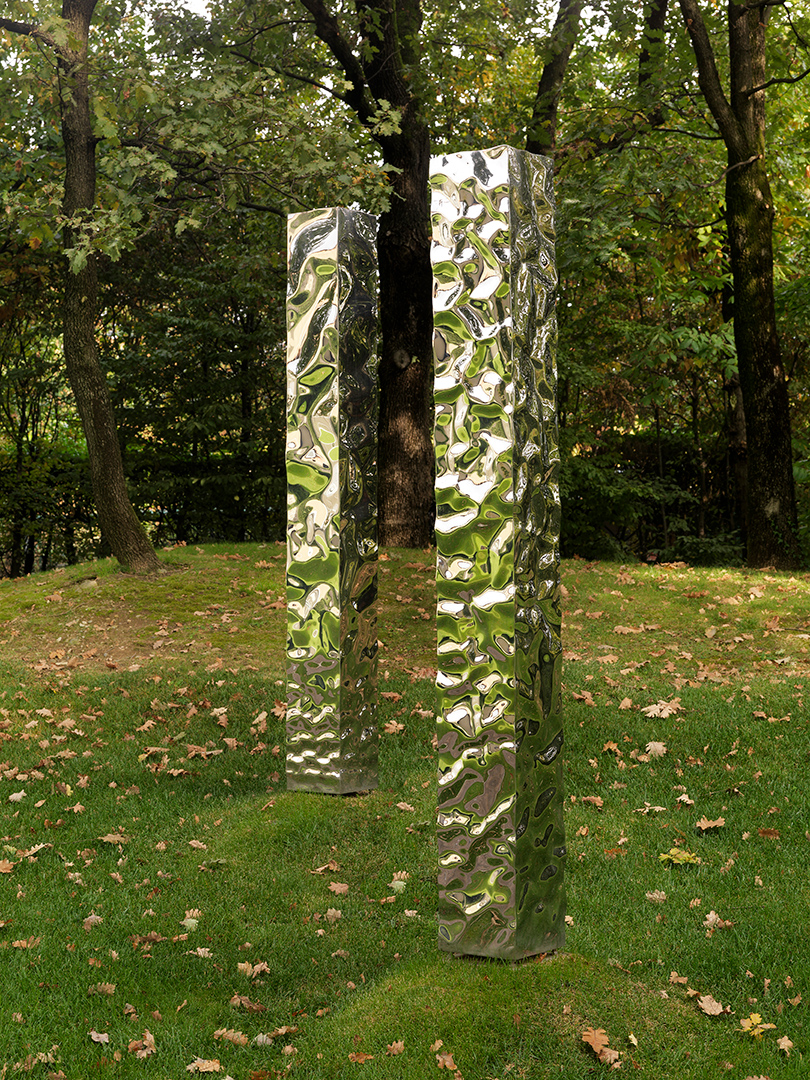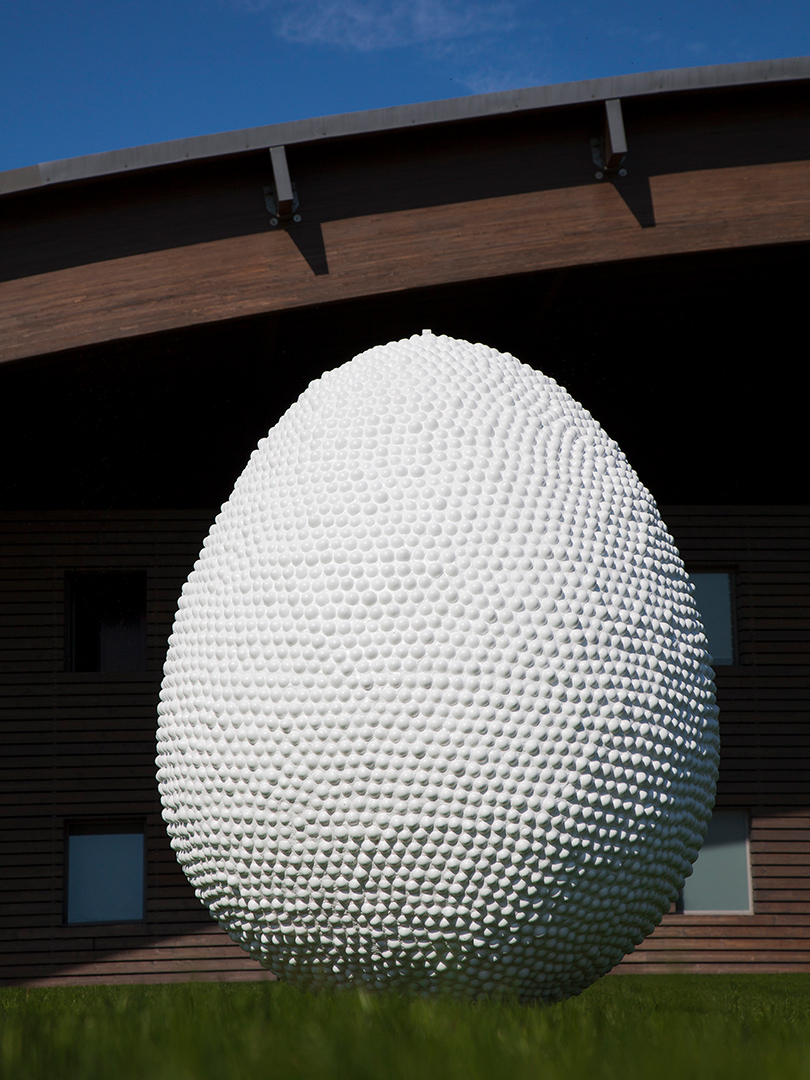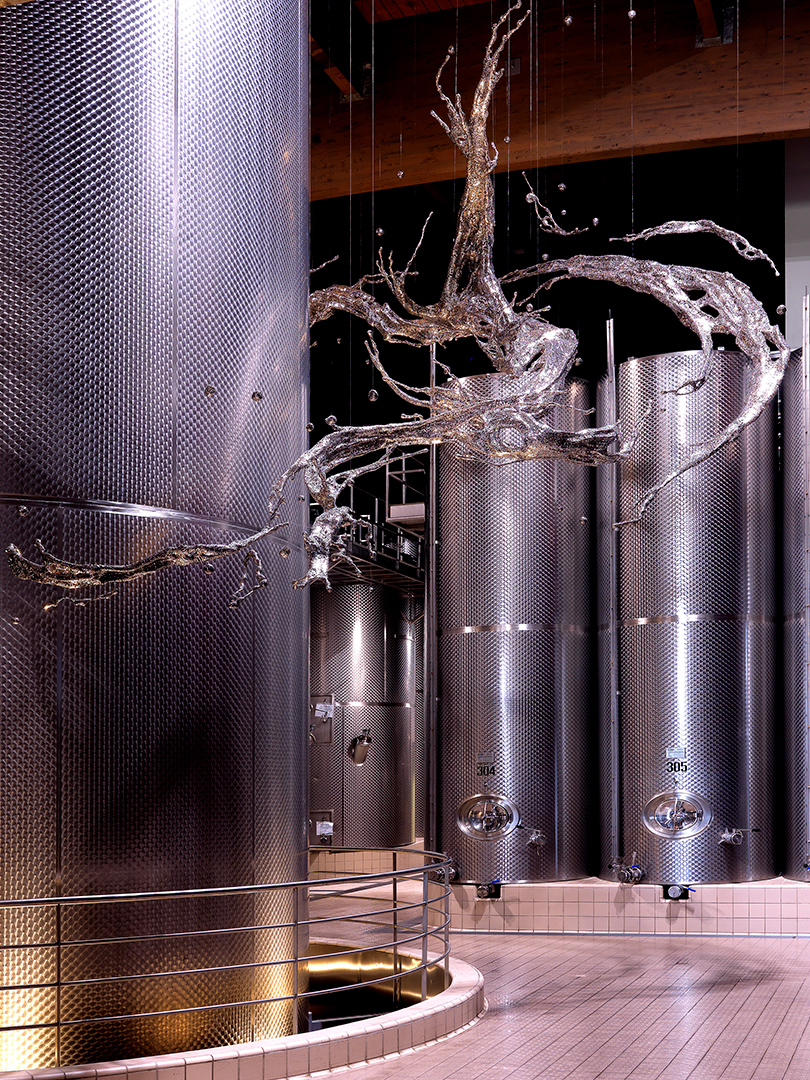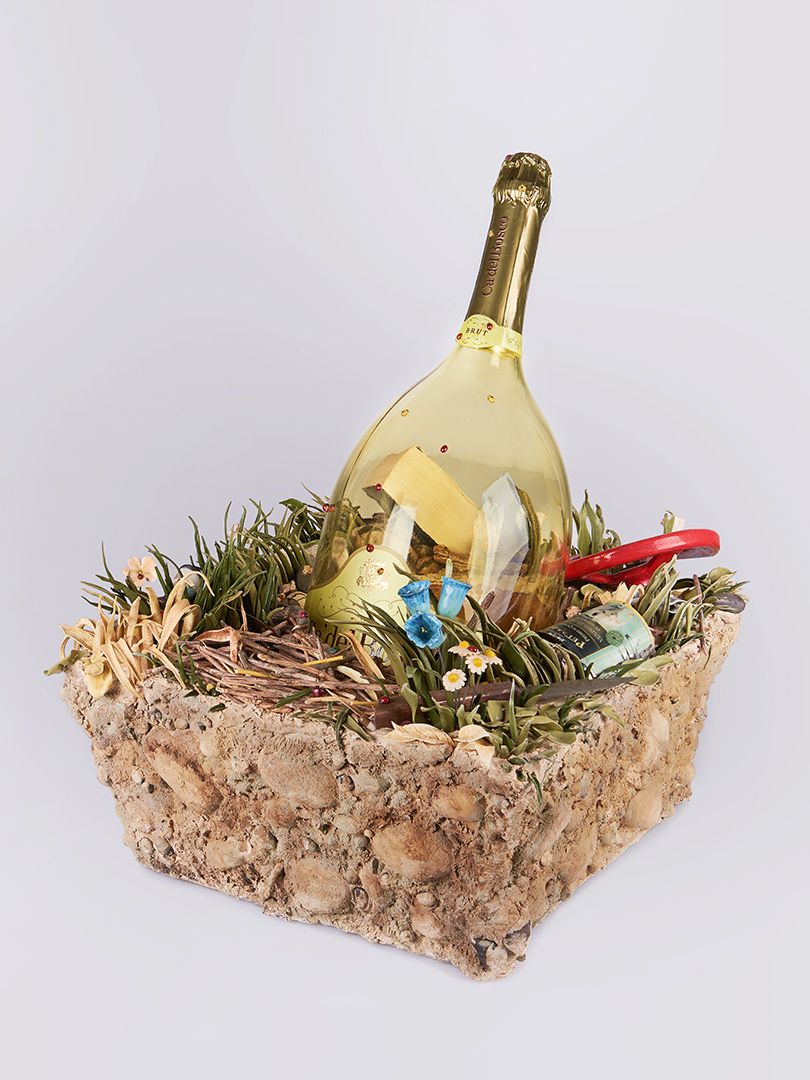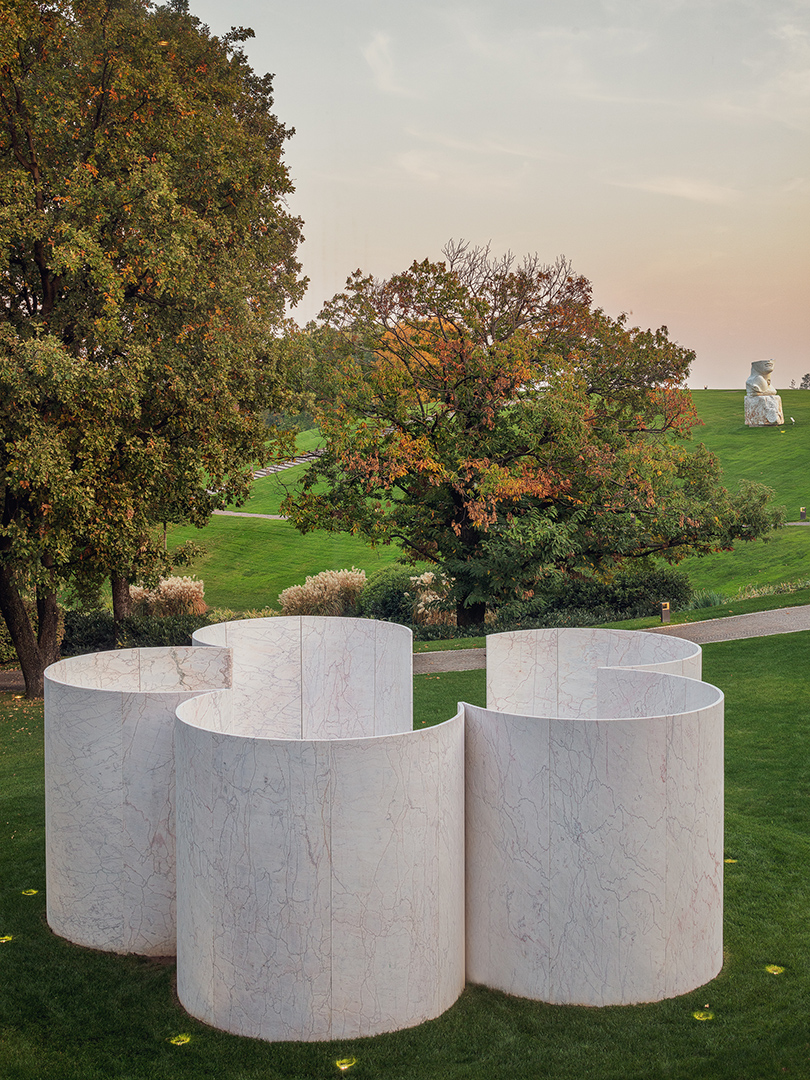Ca’ del Bosco takes to heart this pronouncement of Luigi Veronelli, one of the central players in the valorization and exposure of classic Italian food and wine in the late ‘80s, when he introduced the first works of art installed around the wine cellars in Erbusco.
The passion for art springs from its similarity to wine, a three-dimensional product that stimulates multiple senses: vision, olfaction and taste.
Maurizio Zanella’s predilection for sculpture is well served by the location, whose stunning landscapes provide the perfect setting for works of art. The works chosen express values and concepts associated with the natural cycles of the vineyards and their surroundings. With time, passion and creativity have been enhanced by a taste for challenges and intellectual provocation.
The works of art situated at Ca’ del Bosco are not part of a collection: all the artists’ works are site-specific, planned after having visited the winery, so that the art will interact with the natural beauty of its context.
Art has played a fundamental role in the growth of the winery since the 1980s, allowing Ca’ del Bosco to come into contact with people and worlds who prized quality wine and understood the added value of a cultural approach associated with the world of wine.
A decision that made it possible for the wines of Ca’ del Bosco to quickly earn a solid reputation, which over the years has grown into an indissoluble bond.
The resulting image is strong and long-lasting, of high cultural and economic quality, reflecting human ambition and perseverance.

